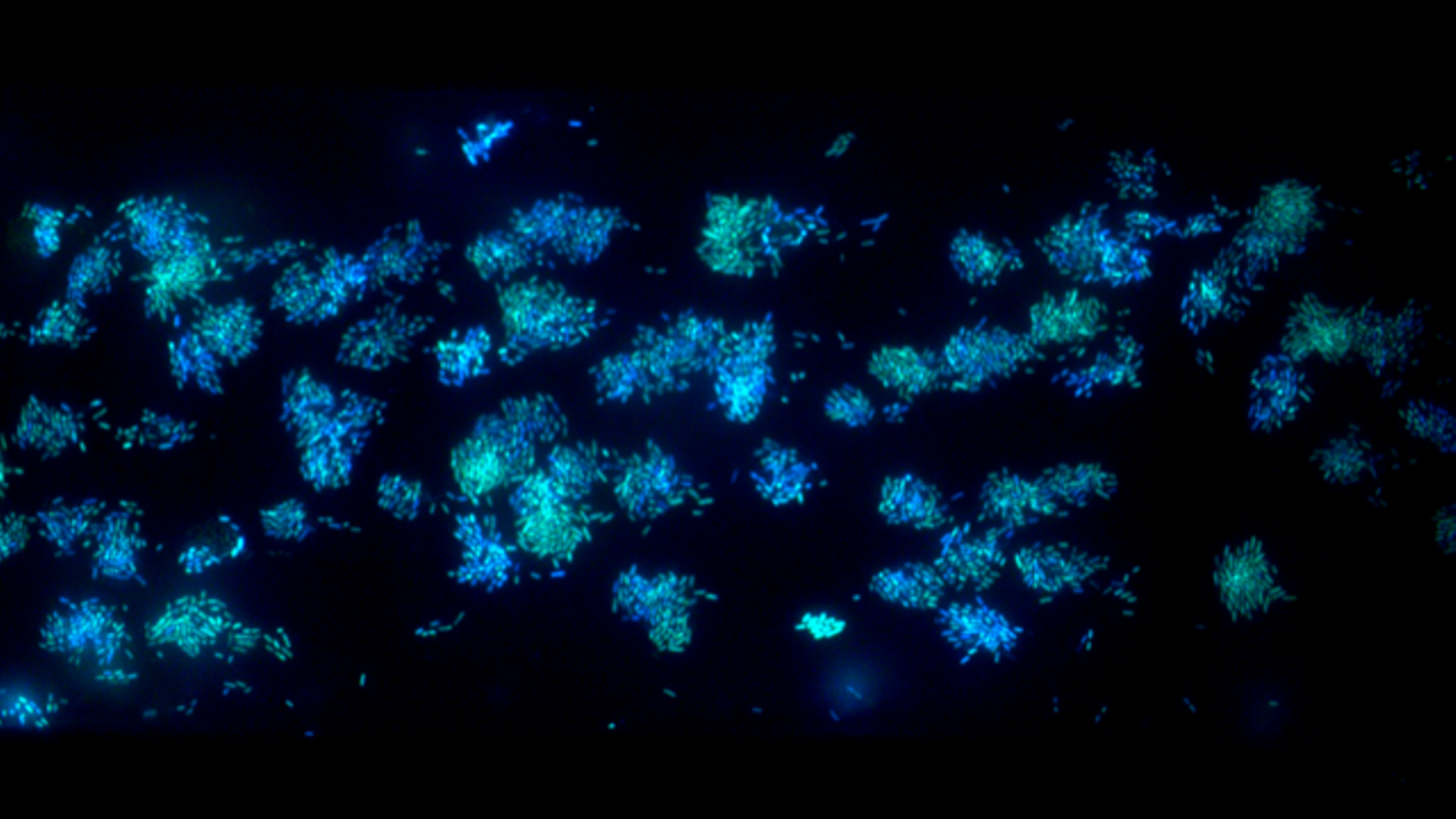Research

Bacterial cells behave as individuals. Mutation and genetic exchange are important drivers of bacterial individuation, but these changes are relatively rare. At higher frequencies, genetically identical cells display metastable variation in growth rate, response kinetics, stress resistance, and other quantitative phenotypes. These cell-to-cell differences arise from non-genetic sources: stochastic fluctuations in gene expression, asynchronous cell cycle progression, cellular aging and senescence, and asymmetric partitioning of cell components at cell division, among others. Temporal variation at the single-cell level generates phenotypic diversity at the population level. This diversity is critical for bacterial persistence in unstable and stressful environments because it ensures that some individuals will survive a potentially lethal assault that would otherwise extinguish the population.
Research in the Laboratory of Microbiology and Microtechnology (LMIC) is focused on the quantitative dynamics of microbial behavior in fluctuating environments. Our principal research tools are time-lapse optical (fluorescence) and atomic force microscopy. We collaborate with colleagues in EPFL’s School of Engineering to design, construct, and apply new microfluidic and microelectromechanical technologies for real-time single-cell microbiology.
Most bacterial infections come and go in a matter of days or weeks, but tuberculosis persists for the lifetime of the mammalian host. In the Laboratory of Microbiology and Microsystems (LMIC), we study the persistence mechanisms that enable Mycobacterium tuberculosis to endure in the face of environmental assaults, antimicrobial therapy, and host immunity. We seek answers to the following questions:
What are the non-genetic sources of cell-to-cell phenotypic variation in bacteria? How does this non-genetic heterogeneity impact on bacterial persistence in fluctuating environments? On what time scales do variant phenotypes persist?
Why are some bacteria so refractory to elimination with antimicrobials? What are the dynamics of bacterial division and death in persistent subpopulations? Are the underlying persistence mechanisms stochastic or deterministic?
How do bacteria blunt the impact of host immunity in order to establish and maintain persistent infections? What are the dynamics of bacterial division and death during persistent infections? Why does only a fraction of the bacterial population persist?
What metabolic adaptations are required for long-term bacterial persistence in the chronically infected host? How does the “wiring diagram” of central metabolism adapt as the bacteria transition from fast growth (acute infection) to slow growth (chronic infection)?
Why do mycobacteria grow so slowly compared to other bacteria? What physiologic adaptations are required for slow growth? What are the scaling laws that link bacterial growth rate and time-dependent physiological processes?